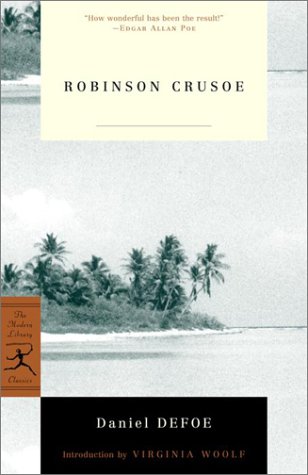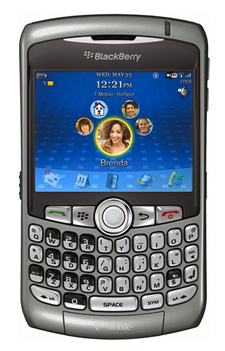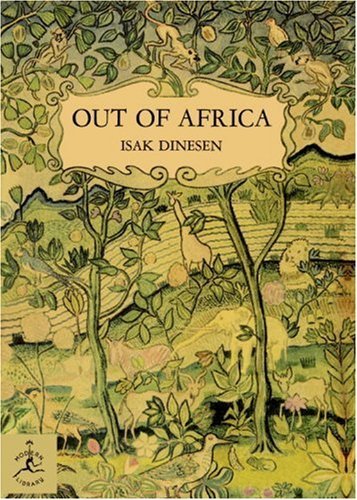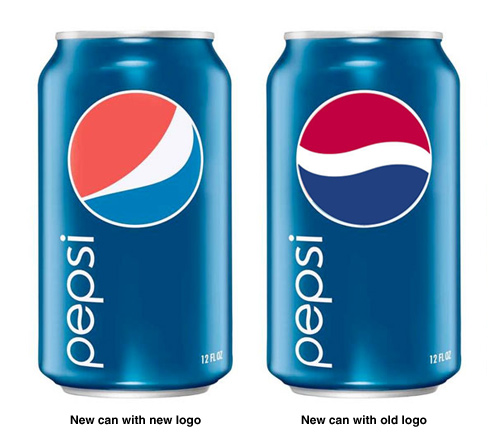In preparing for this story, I asked a friend who uses the internet much less than I do some questions. I couldn’t help but chuckle when I read the following addendum to his answers:
Things I hate about online people:
- Everyone thinks they are an expert or critic.
- People become increasingly aggressive when shielded by the blanket of anonymity online.
- Online folks are much more interesting within the confines of their computer than they are in real life.
Excluding short articles and blog posts not on Smooth Harold:
What do all those silly corporate titles really mean? Let’s find out.
According to Wikipedia, the Chairman (of the board) is pretty much the top dog. He elects the CEO and President who then elect the rest of the down line. The Chairman and the rest of the board are more concerned with governance while the CEO and President are more concerned with management. The distinction between governance and management allows for clear lines of authority with the aim being to prevent a conflict of interest and too much power being concentrated in the hands of one person.
The President can also be known as COO or chief operating officer, taking care of the day-to-day operations of the company while the CEO is more concerned with strategic management. The President or COO report directly to the CEO, and the CEO to the board.
These titles are generally used for large, public corporations, while partners (chair persons) and directors (managers) are typically used for smaller, private firms. There you have it.
Originally published Oct 21, 2005
I already told about my new hairdo, the “Reverse Cow Lick.” I haven’t cut it in a while, so the swirl is getting a little long. This morning, my wife looked at me awkwardly and said, “The back of your hair looks messed up, because you’re wearing a comb over. Your cowlick is all over the place!”
Ladies a gentleman, a new world record. First man with a full head of hair to rock a comb over.
See also: Overheard at the Snow’s house: “You look like a five year-old”

Never being good enough in real life, my brother and I would vicariously live the life of true skateboarders on finger boards. We could pop ollies and rail slide on real boards, and rode them often. But you should see how rad a kick flip I can land with this little guy. I used to play with several like him for hours as a child.
So imagine the nostalgic punch to the face after spotting one at the toy store on Friday, while shopping for the girls. I had no idea they still sold them. With Lindsey teasing at my side, reminding me that I will turn 30 this summer, I excitedly considered all available options. I decided an a gnarly Alien Workshop miniature.
Best $3 I’ve ever spent in my adult life. Interchangeable wheels, stickers, and screw driver included in the set!
Continue reading…

The rascal you see pictured above is my 1 and a half year old, Maddie. Lindsey and I often call her “The Destructor,” because she’s so rambunctious.
She also teases her elder sister Sadie—quite frequently.
I first noticed Maddie’s habit several months ago. If the girls are ever meant to share something, Maddie will usually dangle it in front of her sister, then rip it away at the last minute with a cute little chuckle grunt. Like her mother, Sadie would never do something like this, nor does she find pleasure in doing so.
Continue reading…
 I finished reading The Kite Runner a couple of weeks ago. Here are my postmortem thoughts:
I finished reading The Kite Runner a couple of weeks ago. Here are my postmortem thoughts:
- The book starts slow, but quickly picks up once the story flashbacks to the protagonist growing up in late ’70s and early ’80s Afghanistan.
- Khaled Hosseini is a great writer. You’ll enjoy reading his style.
- The book has one of the best twists I’ve ever read. About a third of the way through, you will literally be shocked by a very grave revealing.
- Published in 2004, there is no bloated author introduction to be found. Yay!
-
Continue reading…

In an effort to grow a handful of consumer websites that I publish, I’m seeking the help of a business manager (independent or otherwise) to hawk ad inventory for me. The biggest property, pictured above, generates 85,000 unique visitors per month and reaches 13,000 RSS subscribers. I also have a handful of other properties I’d like to monetize. If you or someone you know might be able to help, please email blake@griffio.com so we can chew the fat. Thanks! Now back to regularly scheduled programming.

Two years ago, I launched the Smooth Harold Helpdesk and Open Lunch Invitations (see sidebar). In that time I’ve met with more than a dozen individuals I previously didn’t know, fielded upwards of 50 email inquires—ranging from typography design to how to make a pregnant wife happy—and rekindled relationships with countless friends, colleagues, and associates. To say the program has broadened my horizons and created new opportunities would be a gross understatement.
“If you have a specific question you think I might be able to answer (business, web, personal, etc), don’t hesitate to ask via email or in person over lunch,” I wrote at the time. “If I don’t know the answer, chances are I can refer you to someone who does. And no, this isn’t ‘you scratch my back I scratch yours.’ It’s just a genuine attempt to share the little that I’ve learned from talking with people smarter than me, reading good books, and seeing what sticks.”
Continue reading…

Which beast would win in a tournament of mortal combat: the king of the jungle, a ferocious striped feline, or a godless marauding killing machine (aka bear)? In other words, who is the ultimate carnivore? In the spirit of the recent NCAA basketball tournament, let’s find out.
Continue reading…

I think every hard-working individual who desires should be able to live in the United States. Unfortunately, that’s not as easy as it should be for people trying to get in by the book, because illegal immigration is so rampant. Call it the emigrant’s plight: they want to get into the country, but our system is so broken, they either abandon (or postpone) the American Dream or risk deportation by going undocumented.
Continue reading…
The British had it right at one time. During the 19th century, their culture viewed stocks and securities exchange as a less than noble venture, according to the writings of Jane Austen and Charles Dickens—like how you and I look upon multi-level marketing companies today. Appropriately, the stock market was widely known then as “speculation.” A theory. A guess. An unverifiable promise or conclusion.
At some point, investment sharks (don’t call ’em bankers) hijacked the accurate description of “speculation” to mean “investments,” “stock market,” and “Wall Street”—prestigious terms that sound nothing like the conjecture they represent. Smart people made money on changes in the fickle market, giving hope to uninformed individuals, who blindly followed and still lose the majority, if not all their money, every few decades. Some are lucky. Most are not.
Continue reading…

“What is art?” is perhaps the most futile question ever asked. It’s like trying to argue what the best color is.
But I think I’ve found what the definition of great art is: a visible, audible, or experiential creation that gets people talking. Yes, that includes shock artists that insipidly use controversy to attract publicity. And no, art doesn’t have to be properly marketed or seen by lots of people to make it great. But if an original creation, whether accidental or intended, doesn’t make a lasting impression on at least one beholder, it can’t be great art. Am I wrong?
Panting by Jonathan Janson, a Vermeer impressionist

If these ominous clouds clear up, I’m scheduled to play my first game of old man’s baseball tonight. I play right field for the 26 and older Cubs.
Last year, our team made the switch to pinstripes, identical to the ones you see an angry Lou Piniella wearing above. I hate pinstripes. Their outdated. And they make you look like a husky douche. Two years ago, we wore gray pants and blue tops. I wish we still did.
Can I get a witness?
See all: Baseball-related posts
Author’s note: This is the piece I pitched to the Miami Herald and DJ Times after our stay in Fort Lauderdale. The Herald said it was too “trade specific” and the Times said it was too “Stanton specific,” so I’m publishing it here so it can see the light of day. Enjoy.

HOLLYWOOD, Fl. — Despite three decades of newer technology, vinyl records are still crackling. In fact, vinyl sales grew last year, doubling to almost two million in the U.S., according to Nielsen Media Research—the highest they’ve been since 1991.
“Though vinyl’s popularity waned with the emergence of cassettes and CDs in the late 1980s, records continue to hold a niche in the music marketplace, especially among audiophiles and DJs,” says Joshua Friedlander, vice president of research for the Recording Industry Association of America (RIAA).
Helping to boost last year’s total is a growing number of teens who prefer the collectible nature and warmer sound of vinyl—comparable to listening to a “live” self-playing piano, as opposed to flat MP3s, which are often forgotten as quickly as they are downloaded.
Continue reading…
Excluding short news articles and blog posts:
A message—whether an email, voice-mail, sticky note, or blog post—is just a mini presentation. It’s a way of conveying information to an audience. To effectively do so, I try to adhere to the following 3 principles.
-
Be brief. Say what you need to say and nothing more. Keeping it simple will allow your audience to understand and remember what you want them to.
-
Be detailed. In what you do choose to say, tell the audience specifically what they need to know, including quantities, hard deadlines, and delivery.
-
Have structure. Write, record, annotate, say, or outline your message in an organized manner, so there is no confusion.
If you are brief, detailed, and structured when conveying information to an audience, your message will be loud and clear. Just be sure you have something important to say…

If you look closely at the above picture—through the flash glare—you’ll see a little white spot on my fingernail. For as long as I can remember, I get one every few months or so. It’s called Leukonychia Punctata, the most common form of random white spots on fingernails. It is usually caused by a deficiency of zinc in one’s diet or mild trauma to the nail, doctors say.
I’m not sure what causes mine. But thanks to an insatiably curiosity and my ninja Google skills, I finally have a proper diagnosis. Ahhh. That feels better. Anybody else get spots on their fingernails?
 At the recommendation of a long-time Smooth Harold reader (thanks, Nic), I finished Robinson Crusoe over the weekend. Regarded as the first novel written in English and first published in 1719, it’s a story about high-sea adventure, shipwrecks, castaways, gratitude, hard work, and international intrigue.
At the recommendation of a long-time Smooth Harold reader (thanks, Nic), I finished Robinson Crusoe over the weekend. Regarded as the first novel written in English and first published in 1719, it’s a story about high-sea adventure, shipwrecks, castaways, gratitude, hard work, and international intrigue.
What I like most about the book is Defoe’s poetic commentary on human behavior. For example, after Robinson nearly drowned at sea for the first time, he quickly swore off his selfish ways and committed himself to God, before changing his mind after disaster had been averted: Continue reading…
[youtube]http://www.youtube.com/watch?v=62XRwGKtlHc[/youtube]
If you have a DS, please head to your nearest Wii, game store, or DS kiosk to download a free demo of Rhythm Heaven. The above video does a better job explaining the game than I ever could, but in short, you tap, flick, hold, and slide the DS stilus in rhythm with the music to produce a desired effect… say building robots on an assembly line. It’s as crazy as it sounds, but also a lot of fun. I haven’t played a game that made me smile this much since World of Goo. The full version comes out April 6.
My wife and I have been reading classic literature this year. She finished Jane Eyre last week before starting Great Expectations, and I tackled Out of Africa and Old Man and the Sea before moving to Robinson Crusoe. We both agree: it’s inspiring stuff—and much better than junk food reading.
We also agree that those wordy, overblown, or otherwise melodramatic introductions by semi-popular modern authors are lame. I understand it’s a marketing ploy to sell more re-released books, and you can always skip ’em. But they get in the way of great literature. I have yet to read an author introduction that I enjoyed. Let me get to the book already, or at least call the thing an “author retrospective” and put it in the back of the book.
Dumb.
I played football for three years from 6th through 8th grade. I was a running back, and I loved hitting people while holding the ball—lower your head and boom! On the other hand, I hated being blindsided. And one drill is the mother of all blind side tackles: Bull in the Ring.
For a pansy example of the drill, watch this video at minute 4:45. Now for the reality as a youngling playing in the deep South. First, just about everyone who plays football hates Bull in the Ring, except those crazy jacked up players that aren’t quite right in the head. As its name implies, one player is encircled by the entire team. In my case, it was around 18 players usually. So 17 vs. 1. Nice odds, eh?
Continue reading…
[youtube]http://www.youtube.com/watch?v=nda_OSWeyn8[/youtube]
Newscast from 2006. You can’t make this stuff up, can you, Nicholas?
 I’ve been an avid BlackBerry user since 2006. I think they’re great if you can moderate their use. (You don’t want to be the loser in the room who plays with their phone all night, right?) But I would also like to see some changes for the better. And becoming an iPhone is not one of them.
I’ve been an avid BlackBerry user since 2006. I think they’re great if you can moderate their use. (You don’t want to be the loser in the room who plays with their phone all night, right?) But I would also like to see some changes for the better. And becoming an iPhone is not one of them.
- Multi-color LED alerts. One of the best features of the BlackBerry is the ability to glance at it from afar without activating the screen to see if you have an unread message. For example, the little LED in the upper right corner blinks red when I have a new message. But I wish I could set different types of messages to display different color alerts. For example, the Curve’s LED blinks blue when in Blue Tooth mode, and green when fully charged. Why not put those colors to good use?
- Continue reading…
I teach Sunday School once a month to a small group of boys. Last week, I taught a subject that is dear to my heart: using time wisely. Spiritual advice aside, the lesson also included some excellent secular counsel, in the form of the following short story: Continue reading…
I was 15 the first time I read Ernest Hemingway’s Old Man and the Sea. I remember thinking when discovering it: “Really? A Pulitzer Prize book that’s only 127 pages? I can do that!” And I did.
I liked it. It was an easy read. I felt for the man, and it was inspiring. Last week, I finished it for the second time, some 14 years after I first read it. My feelings haven’t changed much, but I appreciate Hemingway’s metaphors more so this time than the last. Some updated thoughts:
Continue reading…
Now before any dreamy eyed Obama voters get offended by the timing of this, I’m in no way calling our nascent President a failure. I’m still hopeful. But as an American, I want answers, which is what good reporting should be seeking anyway. So why haven’t these questions been asked (or maybe I missed them)? Continue reading…
 By recommendation, I finished reading Out of Africa by Isak Dinesen last month. Though hardly a page-turner, I have a stronger appreciation for Africa after reading this book than by reading or seeing any other material on the subject. It’s a true story about a Danish transplant and her experience running a farm in east Africa.
By recommendation, I finished reading Out of Africa by Isak Dinesen last month. Though hardly a page-turner, I have a stronger appreciation for Africa after reading this book than by reading or seeing any other material on the subject. It’s a true story about a Danish transplant and her experience running a farm in east Africa.
It’s not the easiest read. I lost interest from time to time for a page and a half. But a compelling short-story is always within reach, making the effort worth it. For example, consider this little gem of an observation:
“Native [Africans] dislike speed, as we dislike noise, it is to them, at the best, hard to bear. They are also on friendly terms with time, and the plan of beguiling or killing it does not come in to their heads. In fact the more time you can give them, the happier they are, and if you commission a Kikuyu [Kenya’s most populous ethnic group] to hold your horse while you make a visit, you can see by his face that he hopes you will be a long, long time about it. He does not try to pass the time, but sits down and lives it.”
Lovely reading. And a great book if you want to improve your writing.
I was told the following story with an Indian boy and rattlesnake growing up, but the principle is just as poetic. From Wikipedia:
The Scorpion and the Frog is a fable of unknown author, often mis-attributed to Aesop. The story is about a scorpion asking a frog to carry him across a river. The frog is afraid of being stung, but the scorpion reassures him that if it stung the frog, the frog would sink and the scorpion would drown as well. The frog then agrees; nevertheless, in mid-river, the scorpion stings him, dooming the two of them. When asked why, the scorpion explains, “I’m a scorpion; it’s my nature.”
In other words, “You knew what I was when you picked me up.”
[youtube]http://www.youtube.com/watch?v=jETv3NURwLc[/youtube]
I stumbled upon this clever commentary by Louis C.K. after it was published to the internet ages ago (aka two weeks ago). Thanks, Josh.
They can take away my representation, but that can’t take away my purchasing power.
I’ve said it before, but it’s been frustrating to watch the ballooning growth of our national debt, after eight years of unprecedented ballooning. For a long time, it seemed as if I was powerlessness to what was going on—like I couldn’t fight back.
Not anymore.
Continue reading…
I received the below reader email Thursday, inquiring about the best way to highlight text within a paragraph.
I’m a design student working on a book layout and wanted to add some texture to my text, but not if it impedes readability. One of your articles deplored in-line bolding, but what about italicizing? And if that’s acceptable, are the commas, quotation marks, and the speaker’s name (“______,” says Mr. X, “_______.”) also italicized? — Jo
Thanks for reaching out, Jo. I’m in no way the authority on typography design, but I don’t think italics are the readable friendly design answer. Continue reading…

Is it possible to have an identity complex a year before turning 30? After changing my hair two weeks ago, I decided to wear high socks with shorts today (I need new pants, plus the weather is nice, okay?). Excited about my throw back to ’90s sock fashion, I asked Lindsey what she thought. “You look like a five year-old,” she proclaimed. Maybe so, but I’m tired of anklet socks. Besides, it’s kind of fun to be different, and who do I need to impress? (I’m married.)
Nearing the end of Out of Africa (review forthcoming), I couldn’t help but notice how author Isak Dinesen used a lone “fortune” as opposed to the more popular “good fortune” when she wrote:
“Natives have such a feeling for, and faith in, fortune, that now, after one success, they may have begun to trust that all was going to be well, and that I was to stay on the farm.” p370
By using fortune alone, which itself implies success, Dinesen caused me, the reader, to pause and consider what she wrote, rather than skimming a cliche. You too can add more meaning in writing by avoiding clutter adjectives, which dilute the meaning of words. A good reminder.
 Click for more cleverness, care of Nate Beeler.
Click for more cleverness, care of Nate Beeler.
I haven’t taken a fortune cookie serious — let alone keep one — since… well, forever. Rather than predicting actual fortunes, almost all of them instead state the obvious or reference vague generalizations like, “Your friends have heartbeats,” or, “You’ll never know what you can do until you try.”
Dumb.
My latest fortune cookie, acquired last month after overpaying for an uneasy meal, was a keeper, however: “The project you have in mind will soon gain momentum.” I excitedly thought to myself, “Really? Which one? How soon? Tell me, omniscient Confucius!” I then slipped the two-inch piece of paper into my pocket and later onto my desk as a reminder of my fortune. After a discouraging precursor to Q1, I was willing to let even a cheap, dry cookie have an effect on my professional life.
Yesterday, I closed one of those deals — a reputable and ongoing account that is sure to bolster my portfolio and bank account. As a result, my faith in fortune cookies has been restored. My faith in suspect Chinese joints, on the other hand, has not.
Related: Let me dislike sushi in peace, please
[youtube]http://www.youtube.com/watch?v=qhzEzaYXxdo[/youtube]
Lindsey and I watched Some Kind of Wonderful last night. Having not seen it since the mid ’90s, I had forgotten how funny, well-cast, and totally awesome it is. While there are numerous memorable scenes, this one, entitled “Kissing Lesson,” takes the cake for its effective use of music, humor, and one-liners (“Lesson’s over; you’re cool”). If only more movies were so well done.
Last month, after an unresolved argument with my wife Lindsey, my three year old (Sadie) walked into my home office and on her own initiative asked, “Dad, are you being a jerk?”
Ouch. Her assumption was dead on. Out of frustration, I had been spiteful with her mother only moments before. I bashfully answered in the affirmative, and with her outreached hand in approval, proceeded to make amends with my better half, who was calmly sitting in the next room.
I knew from experience that kids say the darnedest things, but I had no idea they could cut to the core at such a young age. In any case, I’ll take all the help I can get.

At the very least, the team responsible for making the hideous new logo look like a Pepsi-fied version of Strong Sad. Why didn’t the company just refresh their packaging without the logo change? The new cans, and even the “Pepsi” logotype, look slick — I’ll give them that — but they would’ve looked much better with the original, classic logo. Here’s a mock-up I made to prove the point. But what do I care: Coke tastes way better, no?
See also: YouTube: The rebranding of Pepsi

After seven long years, I have finally retired spiky (aka disheveled) hair, some three to four years since it went out of style. In recent years, I would periodically rock the faux hawk for fun, but my decade mainstay was usually spiky — until now.
Before the spike, it was an outdated Caesar cut. Before that it was a naturally curly shag and sometimes Afro cut while in high school. Before that it was a bowl cut in middle school. And before that it was a clean-cut part in elementary school — no funny business.
I’m not sure what to call my new do, but I’ve started “swirling” it from my non-parted side to my parted side, thereby disguising any part whatsoever. I guess you could technically call it a “Reverse Cowlick.” Some hipsters I see when traveling to San Francisco or New York display a variation of this cut, but much more delicately than me.
Whatever it is, I’m happy to be spike free. It was time.
Time Magazine is wrong.
As newspapers — and by extension 80% of all original reporting — face extinction, along with print, the magazine says websites should charge $.10/day or $2/month to access the news. Author Walter Isaacson says this will offset the loss of subscription and classified revenue so creative journalists can still “get paid” in addition to advertising, which isn’t performing well online.
As a freelance journalist, nothing would please me more than getting better pay for the work I do. But I think Isaacson is off the mark — people will never pay for commodity information online (remember the failed “paid” content idea?). If network TV news can survive (while some even thrive) on advertising alone, why can’t websites? Isn’t the idea to stay lean and mean and choose your reporting battles, which can be expensive (say… stationing a full-time journalist in Iraq like the LA Times does on its constituents’ dime)?
Anyone got any ideas? Otherwise, our ability to watch guard government, corporations, and the public through journalism could be compromised.

In case you haven’t noticed, I’ve been pretty cynical about the great economic apocalypse of 2009 and our federal government’s questionable ways of dealing with it. Armed with a degree in business, I like to think I have all the economic answers, but I don’t.
Though I strongly disagree with frivolous spending, especially the kind that doesn’t create actual jobs, I’m not blind to the fact that it’s been going on for centuries. Hopefully good legislation will prevail again, and the people in power will make smart decisions and adjustments to support entrepreneurs.
So rather than complain and point fingers, I hope to contribute, starting with a sensible and positive outlook. Viva, la revolución!
.msnbcLinks {font-size:11px; font-family:Arial, Helvetica, sans-serif; color: #999; margin-top: 5px; background: transparent; text-align: center; width: 425px;} .msnbcLinks a {text-decoration:none !important; border-bottom: 1px dotted #999 !important; font-weight:normal !important; height: 13px;} .msnbcLinks a:link, .msnbcLinks a:visited {color: #5799db !important;} .msnbcLinks a:hover, .msnbcLinks a:active {color:#CC0000 !important;}
This is hilarious!

I have been against any type of taxpayer bailout or “stimulus package” since Congress and America’s most liberal-spending president first passed the $700 billion one in October. I even asked my representative not to vote on the bill, which he did anyway.
As the majority of Americans predicted (60% in both a CNN and Gallup poll), the bailout didn’t work, according to today’s report in The Washington Post. Banks aren’t lending the $200 billion they received from taxpayers back to taxpayers. How kind of them. Continue reading…
After a seven month hiatus (having only read 4-5 books last year), I caught the reading bug again. To stay the course, here are a dozen classics I’d like to read in 2009:
Anna Karenina
1984
War and Peace
The Adventures of Huck Finn
In Search of Lost Time
The Stories of Anton Chekhov
Middlemarch
Moby Dick
The Catcher in the Rye
For Whom the Bell Tolls
I’m currently reading Out of Africa and plan to re-read the following: Hamlet, The Great Gatsby, The Old Man and the Sea, and To Kill a Mockingbird (I remember liking them in high school). Off a recommendation from a well-read friend, I’m also excited to read Water for Elephants and The Kite Runner. And for cheap thrills, I’m going to read The Firm and The Rainmaker, two Grisham novels I missed.
Anything I should add?
UPDATE: Robinson Crusoe, The Count of Monte Cristo, Of Mice and Men, Measure for Measure, the complete Jane Austen collection, Man’s Search for Meaning.

Amid the great economic apocalypse of 2009, Lindsey and I sheepishly took an undeserved (as opposed to the popular “well-deserved”) vacation to Fort Lauderdale this month, while my mom watched the girls. It was the best trip I’ve had in a while, considering the stunning beach, lovely weather, great food, and cheap airfare and accommodations. We liked it so much, we plan on returning with the girls as soon as possible. Here are some of my favorite photos taken during our stay: Continue reading…
I think rhetorical questions can be a persuasive and colorful form of language, but only when left unanswered.
I’m not sure how or when it started, but answering your own insincere rhetorical question seems to be increasingly popular these days, especially among public relation and business folk. Here’s how they do it: “Am I happy about [insert any controversial issue here]? No. But… [insert any justification here].” Worse still, rhetorical answer lovers will often string together three negative questions, followed by a mega justification. Dumb.
Good communication is concise and precise, replete with active voice and direct sentences. In other words, I don’t like when people answer their own rhetorical questions.
For video game pessimists and number crunchers, my latest:
Some runners are automatic. Day in, day out, they hop on treadmills, negotiate cross-country trails, or sidestep pedestrians and cars in the city. It’s as if “Just do it” was baked into their DNA.
I am not one of them. Despite my efforts, I still get discouraged and have to continually assure myself while running that “I can do it.”
To be fair, I haven’t run that much. I ran the 400m in grade school, taking the coveted, second-to-last-place finish at state finals. I ran religiously for four months in 2005, after making a fleeting new year’s resolution, which resulted in my quitting. And I ran intensively for another four months last year in preparation for a half-marathon, an event I had to postpone due to a ruptured disc in my lower back, which also put my running on hold until earlier this month.
I admit that my limited running accomplishments get me through my runs better than I would without, but I feel almost as discouraged now as I did while training for my first long-distance race. Is it unrealistic to hope to become a robot runner — one that doesn’t have to play mind games during every workout — say after running three times weekly for an entire year? I’ll keep on trucking regardless, but it sure would be nice.



 I finished reading The Kite Runner a couple of weeks ago. Here are my postmortem thoughts:
I finished reading The Kite Runner a couple of weeks ago. Here are my postmortem thoughts:







 At
At  I’ve been an avid BlackBerry user
I’ve been an avid BlackBerry user  By recommendation, I finished reading
By recommendation, I finished reading 





